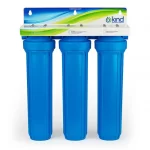Infertility is the failure to become pregnant after a year of unprotected intercourse. Both males and females can be liable for infertility. When we talk about infertility in women, female infertility treatment is essential for getting pregnant but is still unsuccessful despite more than a year of unprotected intercourse. Therefore couples need to seek proper medical assistance. Here are some treatments which were suggested by our senior Dr. Shweta Goswami who is one of the best IVF doctor in Noida to get treated for infertility.

- Assisted Reproductive Technology or ART: It is one of the most popular treatment alternatives available for infertility. This technology is implemented through the combination of fertility drugs and hormonal therapy. This subject includes methods such as in vitro fertilization, intracytoplasmic sperm injection (ICSI), cryopreservation of gametes or embryos, and the use of fertility medication. When used to discuss infertility, ART may also be suggested as fertility treatment. ART mainly refers to the field of reproductive endocrinology and infertility. Some kinds of ART may be used about fertile couples for genetic purposes (see preimplantation genetic diagnosis). This treatment may also be used in surrogacy arrangements, although not all surrogacy arrangements include ART.
- In Vitro fertilization: It is an extensive and highly advanced method to help the sperm and the egg. It is a process of artificial insemination in which the egg and sperm are connected outside the body and then placed in the uterus after the development of the embryo.
First, you take medication that makes many of your eggs mature and ready for fertilization. Then the doctor gets the eggs out of your body and combines them with sperm in a lab to help the sperm fertilize the eggs. Then they insert one or more fertilized eggs (embryos) directly into your uterus. Pregnancy occurs if any of the embryos implants in the lining of your uterus. The procedure was first introduced in 1981 and has been successfully used to give birth to over 200,000 babies. The drug called Clomiphene or Clomid and Serophene are highly recommended treatments for infertility problems. - Medical therapy: Special drugs can be given to women facing problems with ovulation. Gonadotropins are also used in case of unexplained infertility. This is also practiced in women who ovulate to stimulate a better egg or an extra egg or eggs. Fertility drugs may include Clomiphene citrate, Gonadotropins, Metformin, Letrozole, Bromocriptine.
- Intrauterine insemination: It is another procedure that uses a small number of concentrated sperm cells. Sperms that have been washed and analyzed are placed directly in your uterus when your ovary delivers one or more eggs to be fertilized. The hoped-for result of intrauterine insemination is for the sperm to slip into the fallopian tube and fertilize a waiting egg, following a normal pregnancy. Depending on the reasons for infertility, IUI can be coordinated with your normal cycle or with fertility medications. This is a painless process and takes a few minutes to accomplish.
- Egg donation: Egg donation is how a woman, who is usually younger, produces eggs (ova, oocytes) for another person and partner for views of helped reproduction. The recipient of the eggs can have a baby with a partner or using donor sperm. The fertility egg donation process includes recovering eggs from a woman who usually has functioning ovaries. Following egg retrieval, the eggs are fertilized in the in vitro fertilization (IVF) lab using sperm from the receiving couple’s partner, or in certain situations, with donor sperm. Following fertilization in the laboratory and the eggs’ growth for either 3 or 5 days, the resulting eggs are transported to the uterus of the woman who wishes to carry the baby. If a pregnancy is confirmed, the receiving woman becomes the mother having the developing baby through the full term of the pregnancy and childbirth – with all the joys of experience that this affords. Egg donation involves the removal of Oocytes from the ovary of a woman who has taken fertility drugs for ovarian stimulation.
- ZIFT and GIFT: In zygote intrafallopian transfer or ZIFT, the fertilized eggs are placed in the mother’s uterus after IVF within 24 hours, while in Gamete intrafallopian tube transfer (GIFT), the sperm and eggs are mixed before insertion. The processes used in GIFT and ZIFT are closer to natural conception. In ZIFT, the eggs are put in the fallopian tubes rather than directly in the uterus. With GIFT, fertilization needs in the body rather than in a petri dish. However, in vitro fertilization techniques have become more refined.
- Surrogacy: In surrogacy, the surrogate mother is inseminated with the sperm from the recipient’s partner. The surrogate mother then carries the baby and delivers it on behalf of the recipient.
This surrogate mother carries the embryo until full-term delivery and gives the eggs that make her a genetic parent. Furthermore, the most popular form is gestational or IVF surrogacy. An embryo from the expected parents, or a donated oocyte or sperm, is transferred to the surrogate’s uterus.To conclude, female infertility treatment is necessary for women who want to get pregnant and start their own families.If you want any type treatment regarding infertility then please connect with Dr. Shweta Goswami who is working at one of the best IVF doctor in Delhi.

Carl Clay is a health blog author who has been writing about nutrition, fitness and healthy living for over 10 years. He also loves to run, hike and bike with her wife.












